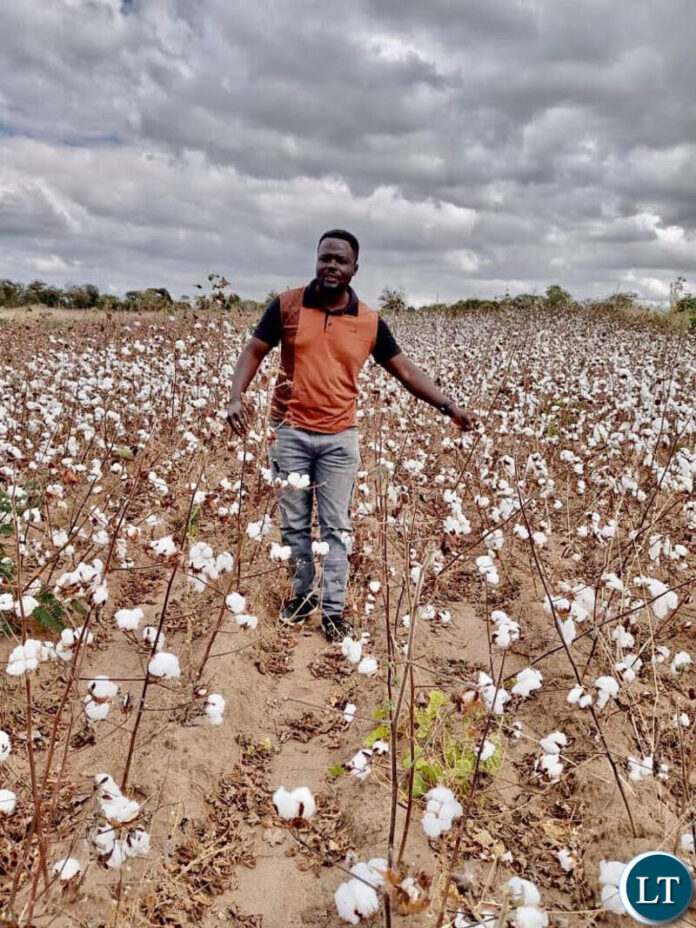By Benedict Tembo
The Cotton Development Trust (CDT), the country’s premier research institution is on a mission to better the livelihoods of cotton farmers and meet the needs of other cotton players such as the ginners. The CDT, based in Magoye on the outskirts of Mazabuka District in Southern Province, is conducting various research activities that stretch from germplasm testing to come up with improved varieties and also various other research activities meant to provide solutions to pest management, soil problems and so on.
Zambia is now part of the international cotton advisory cotton and the breeder at CDT Martin Simasiku was elected as a member of the international cotton researchers association at the just-ended Seventh World Cotton Conference in Egypt. Both platforms give the CDT an advantage to take part in driving the cotton sector in the right direction through networks and opportunities that will be available through projects and other partnerships.
Mr Simasiku says currently the CDT is collaborating with different organisations to spearhead the cotton improvement agenda in line with the government’s National Agricultural Policy to improve the lives of small holder cotton farmers. He says organisations CDT is collaborating with include the International Trade Centre (ITC), Europe Union, The Organisation of African, Caribbean and Pacific States is a group of countries, International Cotton Advisory Committe and Solidaridad and others.
CDT director Lwisya Silwimba said his institutions is developing varieties that are of compact architecture to accelerate growth and mitigate the effect of late pests.
“As CDT we are also aiming at producing early maturing varieties that are able to mitigate the adverse effects of erratic rainfall which is a major effect of climate change. Through the programme carried out by ITC and other organisations, the CDT is promoting the use of Biochar as a soil amendment measure to improve the soil,” Mr Silwimba says
He says the use of Biochar highly reduces the effect of climate change through carbon sequestration in the cotton stalks, a process that meets the carbon net zero objective because it produces or captures carbon at a very low rate of carbon dioxide emission.
“In addition to this, we are training farmers on good agricultural practices such as the use of bio-fertilizers, instead of using synthetic fertilizers which could be a source of harmful greenhouse effect gasses such as Nitrous oxide,” Mr Silwimba says
He says the other agricultural practices is the use of bio -pesticides which help reduce resurgence in pests.
“Training of farmers in the use Molar traps is also being highly promoted by the CDT to significantly reduce the number of sprays for bollworms if possible to zero. The use of molasses, which is an effective substance in attracting pests has shown a lot potential as an alternative integral pest measure. Molar traps are cheap and do not harm beneficial pests a plus in the balance of the ecosystem,” Mr Silwimba said
He said ripping is also another type of minimum tillage approach that is being promoted among farmers. “This type of land preparation causes very little harm to microorganisms in the soil. Because microorganisms are less harmed, it offers a chance for the microorganisms to continue trapping carbon dioxide and sequestering it as carbon which is in form of glomalins and humus. These (glomalins and humus) are good sources of organic matter. High organic matter also improves the status of soils by reducing highly acidic soils and providing rich soil nutrients,” Mr Silwimba said
In addition to this, Mr Silwimba said ripping maintains the soil structure which helps in reducing adverse effects of too much rainfall such as erosion and mineral leaching.
Cotton Board of Zambia executive director Sunduzwayo Banda cotton farmers in Zambia are using economic friendly methods for crop nutrition such as biochar, which is burnt stalks in a pit that traps carbon which is put back in the soil.
“The target is to have net zero carbon emissions into the environment,” Mr Banda said.
He said farmers are being encouraged to use integrated pest management that lessens spraying into the environment.
“We are reducing exposure to chemicals. Cotton is a drought tolerate meaning it uses less water, which is water conservation,” Mr Banda said.


